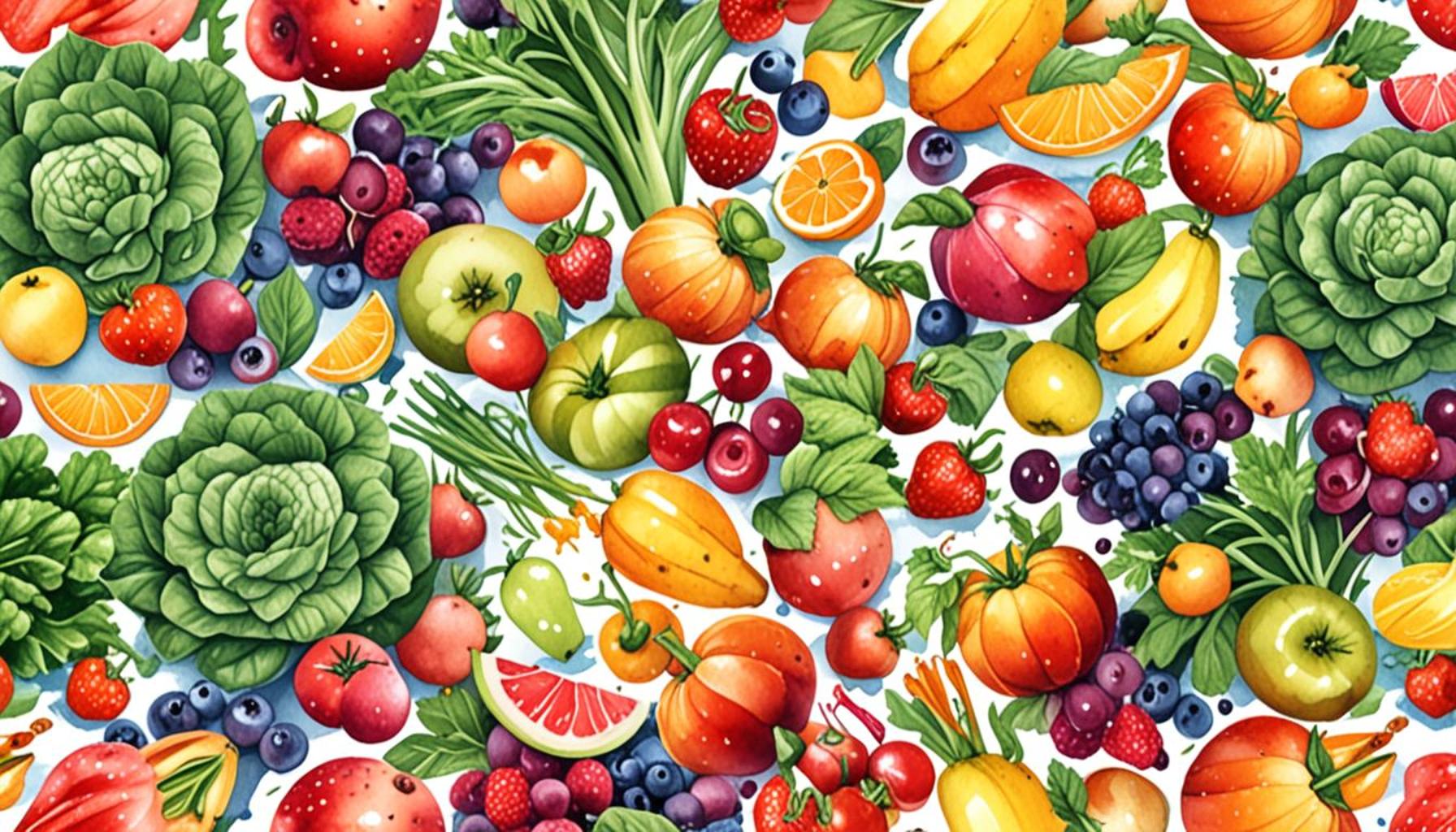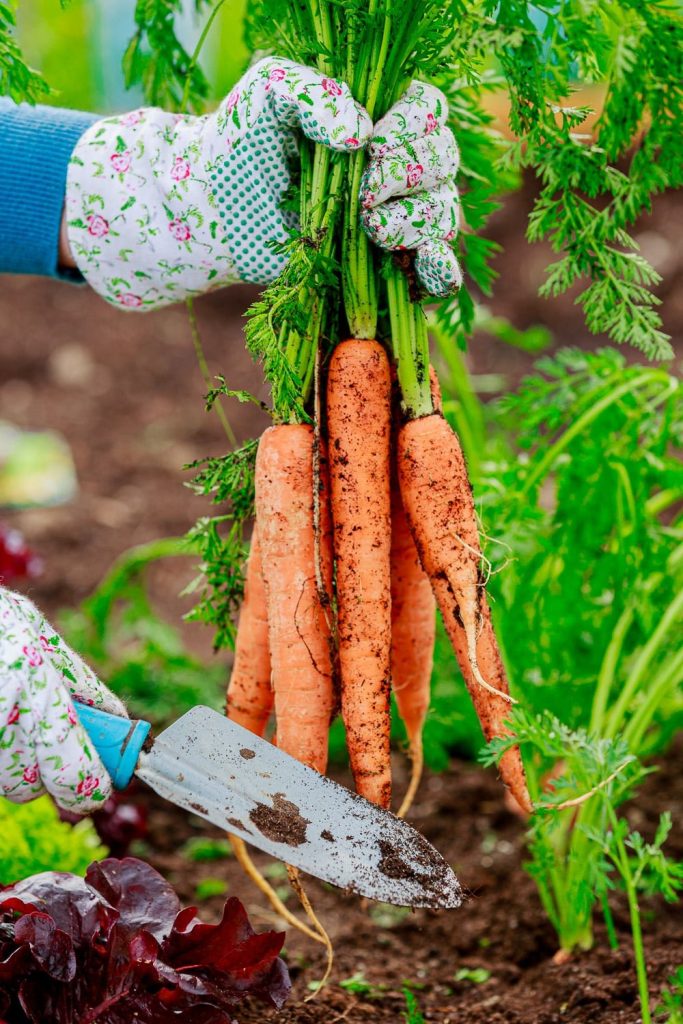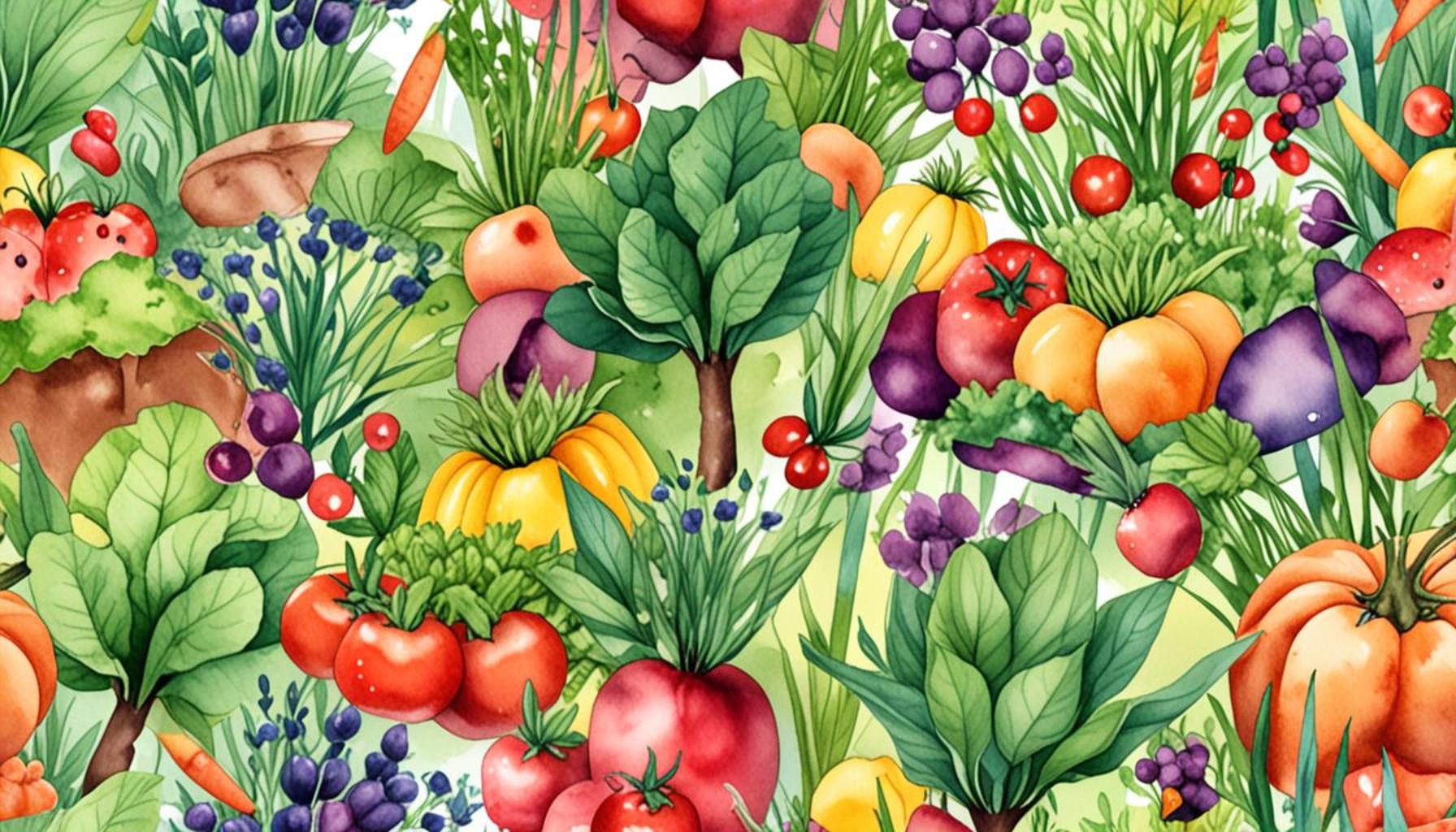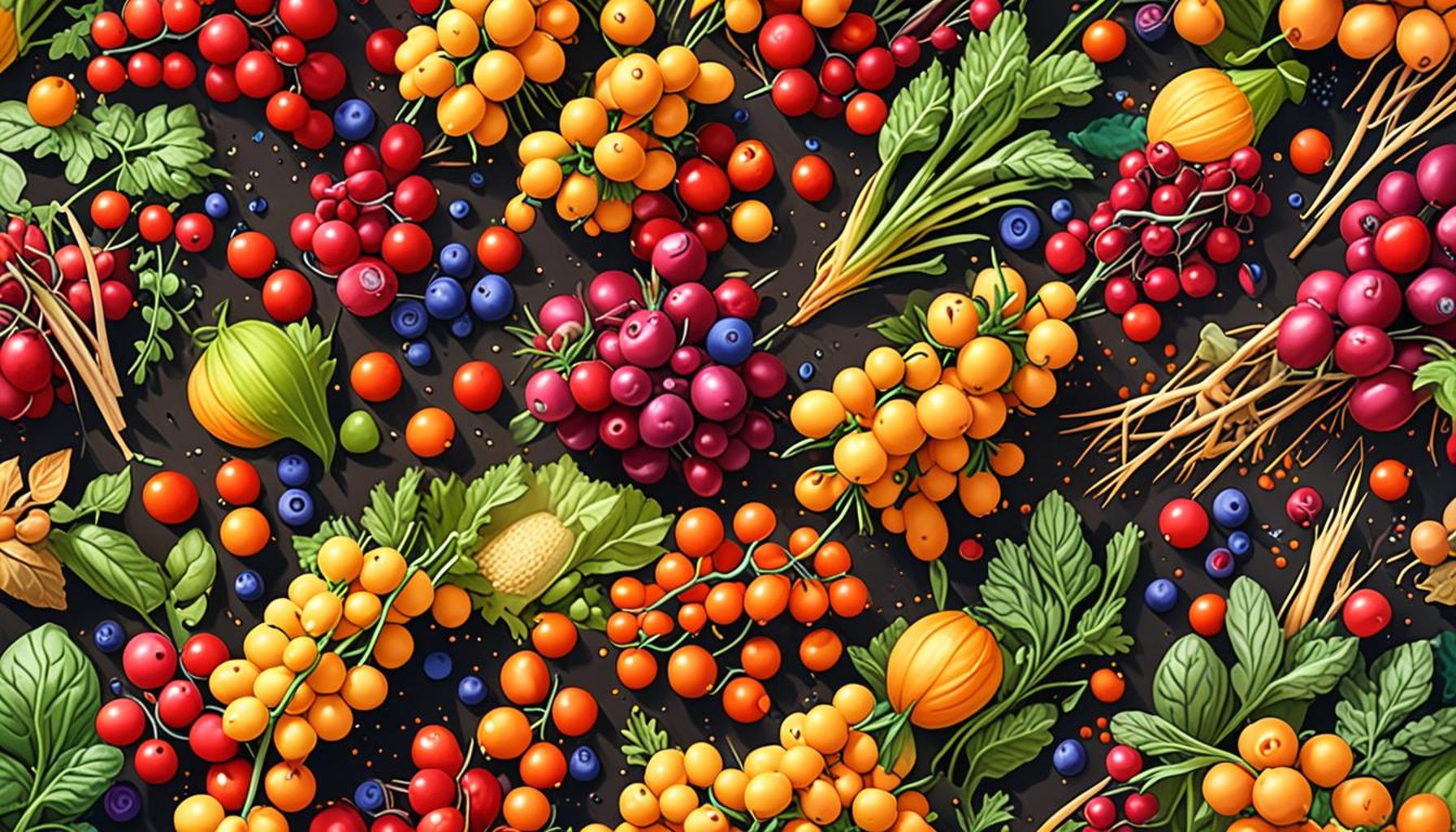Signs of Readiness: How to Recognize the Perfect Moment to Harvest Your Fruits and Vegetables

Understanding Harvest Readiness
Recognizing the perfect moment to harvest fruits and vegetables can significantly impact the quality and taste of your garden’s bounty. Timing is crucial; picking too early can leave produce underdeveloped, while waiting too long can lead to overripeness and spoilage. A farmer’s knowledge, patience, and constant vigilance come into play as they seek an optimal balance for harvesting. This process is not just instinctual; it is supported by an understanding of the specific requirements of each plant variety, as well as their environmental conditions.
Key Indicators to Observe
Each type of produce has unique signs indicating readiness. Here are some common signals to watch for:
- Color Change: Many fruits and vegetables undergo significant color transformations as they ripen. For instance, tomatoes shift from a shade of deep green to vibrant red, while bell peppers may change from green to bright yellow or red depending on the variety. This change signifies that they are reaching their peak flavor.
- Texture: The texture can vary widely from one species to another. For example, cucumbers should be firm to the touch, whereas ripe peaches should yield slightly under gentle pressure. Understanding what the texture should be at peak ripeness is crucial.
- Aroma: A strong, pleasant scent often indicates ripeness. The aroma of a ripe cantaloupe, for instance, is a telltale sign that it’s ready for harvesting. This olfactory cue can lead to discerning the fruit’s quality even before cutting it open.
- Size: Familiarize yourself with average size benchmarks for each type of produce. For example, ideal radish sizes can range from one to two inches in diameter. Regularly checking the size ensures that fruits and vegetables are not only harvested at their peak taste but also at an ideal size for consumer preferences.
- Seeds: For certain fruits, such as watermelons, seeds that are brown and mature can signal the best time to harvest. If the seeds are white and immature, the fruit may not yet be ready for picking.
Seasonal Considerations
The optimal harvest time also varies by season and regional climate. For instance, warm-season crops like tomatoes may be best harvested in the late summer, while cooler crops such as kale can thrive and be picked throughout early spring or late fall. Understanding local growing conditions can significantly improve your timing. In regions with longer frost-free growing seasons, such as in the southern United States, a variety of crops can be harvested more than once a year, whereas northern states may only yield one harvest cycle.
Regular observation is key; daily checks can help you catch that essential harvesting moment! Keeping a garden journal can be invaluable, allowing you to note the timing of harvests, conditions, and even share the bounty with friends and family through home gardening groups and communities. This knowledge leads not just to better crops, but also to a deeper appreciation of the hard work that goes into growing your own food.
LEARN MORE: Click here for insights on integrated pest management

Essential Signs of Readiness to Harvest
Harvesting is a labor of love that culminates the work and dedication of gardening. However, the transition from nurturing the plants to collecting their fruits and vegetables can be a delicate one, requiring keen observation and knowledge. The signs of readiness are not always as clear as one might hope, but recognizing them can enhance not only the culinary quality but also the nutritional value of your harvest. Here are some essential indicators to consider when determining the right moment to pick your produce.
Visual Cues
A characteristic change in color is one of the most reliable signs that your fruits and vegetables are ready for harvest. The vibrant hues usually indicate ripeness and enhance the overall appeal of your garden. For example:
- Tomatoes: These fruits transition from a pale green to a luscious red, indicating they are bursting with flavor.
- Carrots: When they exhibit a robust orange color, it’s a clear signal they are sweet and ready to be pulled from the ground.
- Snap Peas: Ripe peas should feel plump and appear a vibrant green instead of dull or yellowish.
While color is critical, it’s not the sole arbiter of readiness. Understanding the ideal size for harvesting is another factor that can affect your produce’s quality. Knowledge of the average dimensions of specific crops provides a benchmark to evaluate whether you should harvest or wait. For example, zucchini should typically be around 6 to 8 inches long for maximum tenderness, while an eggplant is best when it reaches about 5 to 7 inches in size.
Touch and Feel
Texture plays a substantial role in assessing ripeness. For many fruits, touch can reveal much about their state of readiness. Here’s what to look out for:
- Avocados: A ripe avocado should yield to gentle pressure, indicating it’s ready to eat.
- Bell Peppers: Given their crunchy nature, they should feel firm and solid; a slightly soft skin signals overripeness.
- Cucumbers: These should be firm and smooth, avoiding the temptation of any wrinkles that would suggest aging.
A strong aroma can also signal that your fruits are ripe and packed with flavor. Take a moment to engage your senses; for instance, when cutting into a watermelon, a sweet scent wafting from the fruit indicates a delicious yield inside. Furthermore, plants like basil release a fragrant perfume when they are at their flavorful peak. These sensory cues provide invaluable clues for gardeners eager to reap the rewards of their hard work.
Ultimately, observing these signs—not just the visual shifts but also how the produce feels and smells—will sharpen your harvesting skills. Experience combined with these guidelines helps create a rewarding gardening endeavor and brings joy each time you sink your teeth into home-grown fruits and vegetables.
| Advantages of Timing | Impact on Quality |
|---|---|
| Optimal Flavor | Harvesting at the right time enhances the natural flavors of the produce. |
| Nutritional Benefits | Timing your harvest ensures the highest levels of vitamins and minerals. |
| Extended Shelf Life | Produces that are harvested at their peak can last longer post-harvest. |
| Market Appeal | Perfectly timed harvesting boosts visual quality, appealing to consumers. |
Understanding the signs of readiness for harvesting fruits and vegetables is essential for any gardener or farmer aiming to maximize their yield. Not only does proper timing affect the flavor and texture of the produce, but it also plays a significant role in ensuring optimal nutritional content. Consider indicators such as color, firmness, and size. For example, tomatoes should have a rich color and slight softness, while greens should be vibrant and crisp.Moreover, harvesting at the right moment can significantly reduce waste by prolonging the shelf-life of the produce after it leaves your hands. This is particularly important for those involved in retailing or selling crops, as consumers often seek quality and freshness. By being attentive to the signals from your plants, you not only improve your return on investment but also enhance the overall yield quality available in the market. Engage variety and a keen observational eye to truly master the art of harvesting effectively. In conclusion, mastering the art of recognizing the right time for harvesting can significantly elevate the entire farming experience, ultimately allowing for a fruitful and flavorful bounty.
DISCOVER MORE: Click here to find the best harvest times
Timing and Environmental Factors
Recognizing the optimal moment to harvest your fruits and vegetables goes beyond visual cues and tactile sensations; understanding timing and environmental conditions also plays a pivotal role. Every grower knows that nature operates on a delicate schedule, and that knowing when to pick can be the difference between a bountiful harvest and a less than stellar yield.
Seasonal Changes
The changing seasons significantly impact the readiness of your crops. Many fruits and vegetables have peak harvesting periods aligned with seasonal shifts. For instance, tomatoes typically ripen in the late summer to early fall, while pumpkins are best harvested in the fall when their skin turns a vibrant orange and hardens off. Keeping a close eye on the calendar and weather patterns in your area can help ensure that your crops are harvested at just the right time.
Moreover, some vegetables like kale and brussels sprouts actually taste better after a frost, which can sweeten their flavor profile. Understanding these seasonal nuances allows for timely harvesting that enhances the quality and taste of your produce. Engaging with local gardening clubs or community forums can provide insights into local seasonal variations and harvesting tips.
Days to Maturity
Every plant comes with its own set of ideal conditions for growth, which is often detailed on seed packets or in gardening manuals as days to maturity. These metrics provide an excellent baseline for when to expect readiness. For example, green beans typically mature between 50 to 60 days, while carrots can take from 70 to 80 days depending on the variety. By closely following this timeline, gardeners can better anticipate the ideal harvest window.
Additionally, environmental factors—such as soil quality, availability of sunlight, and water—can influence the growth rate and readiness of your plants. Tracking these elements with garden journals not only allows for improvement in future seasons but also helps in fine-tuning harvesting techniques.
Weather Patterns
Another vital consideration is the impact of weather on harvesting. Rain and storms can lead to waterlogged soil and damage fragile vegetables, prompting gardeners to consider adjusting their harvesting schedules. Conversely, an unexpected heatwave can cause some crops to ripen faster than normal. Observing local forecasts and understanding your plants’ responses can guide you in making timely harvesting decisions. Regular check-ins on your crops and their conditions will ensure you are equipped to act promptly at the first signs of over-ripeness or distress.
In summary, a combination of visual observation, environmental awareness, and adherence to seasonal timing can greatly enhance your ability to recognize the perfect moment to harvest. With careful monitoring and a bit of experience, you’ll become fluent in the language of your garden, ensuring that your fruits and vegetables are always collected at their peak. This not only maximizes flavor and nutrients but also heightens the joy of gardening through the celebration of each harvest.
DISCOVER MORE: Click here to learn how plant diversity can improve your garden’s soil health
Conclusion: Mastering the Art of Harvest Timing
Understanding the signs of readiness in fruits and vegetables is an essential skill for every gardener. By blending your observational skills with knowledge of environmental factors, seasons, and growth cycles, you can elevate your gardening pursuits and achieve bountiful results. The subtleties of nature—like quick shifts in weather and seasonal cues—are vital indicators, guiding you to the perfect moment for harvesting.
As gleaned from our exploration, a commitment to tracking days to maturity helps set expectations, while closely monitoring the growth conditions of your plants enables timely decisions. This attention to detail not only ensures your produce is at its most flavorful and nutrient-dense but also transforms the act of harvesting into a gratifying experience. Knowledge is power in gardening; connecting with local experts, utilizing gardening journals, and engaging in community forums can provide additional wisdom that enhances your harvest abilities.
Ultimately, mastering the signs of readiness fosters a deeper relationship with your garden. The excitement of reaping the rewards of your hard work becomes even more satisfying when you know you are picking at the peak of ripeness. As you continue to explore and refine your harvesting techniques, remember that every day offers a new opportunity to learn and grow. Let your garden communicate with you, and enjoy the fruits—literally and figuratively—of your labor.



